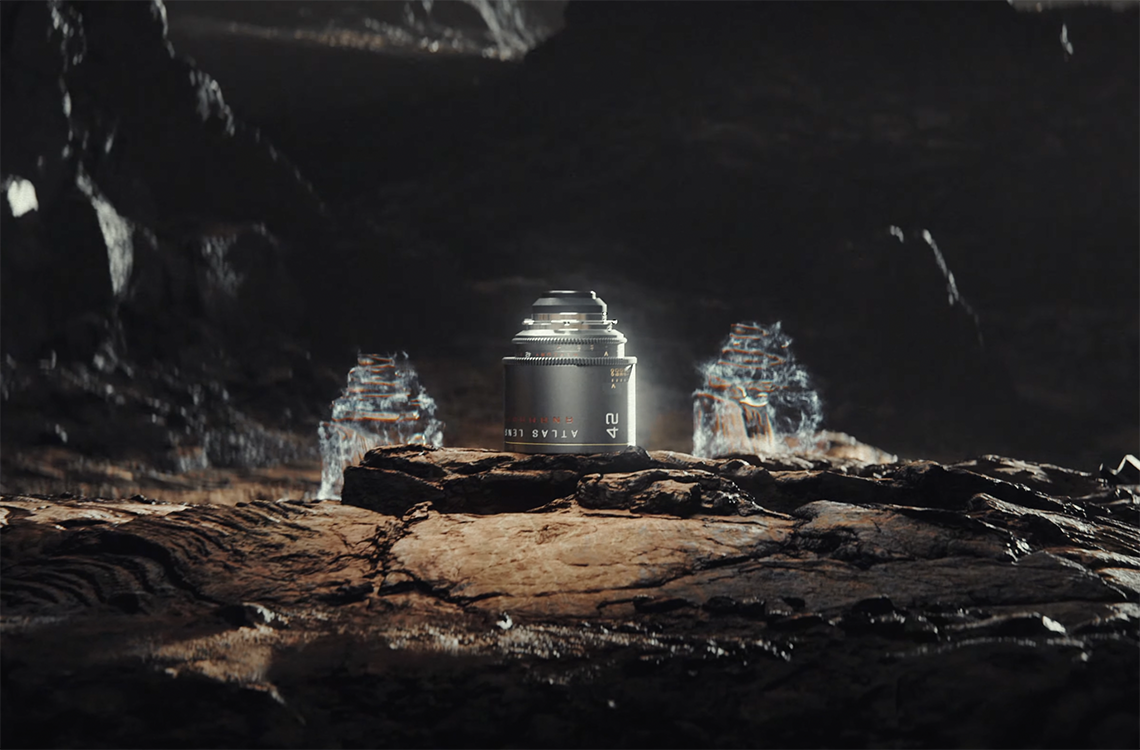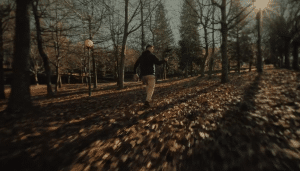From adapters to small lenses, here are the best options for an affordable anamorphic look—even without the lens.
In this filmmaking gear roundup, we’re going to look at a few affordable anamorphic options that will give you a timeless, cinematic-looking image without completely blowing your budget. These lenses and adapters are becoming more and more common among the beginner- to intermediate-level filmmakers. These tools are great for helping filmmakers who are just starting out to find their cinematic voices and visual tastes for filmmaking.
And if a lens isn’t in your budget, we’ve also rounded a few tools you can use to get the anamorphic look without the lens itself.
So all that being said, let’s talk about “anamorphic” means and what this footage can do for your upcoming project.
What Is Anamorphic?
Anamorphic lenses are lenses that optically squeeze the image horizontally onto your recording medium (whether it’s a digital sensor or film) in order to be de-squeezed later in post-production. The act of de-squeezing is something that you might be able to do in-camera or on your external monitor, or you’ll wait until you bring the footage into your non-linear editing program.
The reason affordable anamorphic lens and adapter options are so important is because traditional cinema anamorphic lenses are incredibly expensive. We’re talking price tags in the hundreds of thousands of dollars!
So, let’s talk about some of the cheaper options that will give you that anamorphic flare and classic cinematic look with your footage.
Laowa Nanomorph 1.5x Anamorphic Lens
In one of the most exciting crowdfunding campaigns in a long time, Laowa announced the impending production and distribution of their first anamorphic lens. The price was low, and the example photos and video were stunning. Could this be true? Could there actually be an affordable anamorphic option that gives you that real anamorphic look? Never count Laowa out!
Offering three different focal lengths for almost every mount, the 1.5x squeeze factor was promised to be the consumer shooter’s dream lens. While the shipments for the first round of lenses are still being delivered, we’ll have to wait to see just how popular these lenses become.
I should say that I own this lens. I ordered it back in the summer of 2022 and only just received it in the mail six months later. So I expect to take this thing out with my Blackmagic Pocket Cinema Camera 6K this winter to shoot some test footage. But I will say that after spending a few hours shooting around my neighborhood, this thing rules.
Sirui Anamorphic 35mm 1.33x Lens
Perhaps the most popular and affordable anamorphic option on this list is the Sirui Anamorphic 35mm lens. This will be your new favorite go-to for almost any B-roll you’d ever need to shoot. You get the anamorphic look; you get the flares; and you also just get a well-made, sharp lens that still provides some warmth and texture to your images. It’s also the cheapest option for what you’re getting.
It’s not an adapter, and it’s not a gimmick. Coming in at just under $400, the Sirui Anamorphic Lens is a steal for anybody trying to drastically increase their production value while staying under budget.
To make the Sirui Anamorphic lineup even better, they recently released a 50mm focal length anamorphic lens with a 1.6x squeeze factor. The difference between a 1.33x and 1.6x is actually pretty apparent. The only catch is that the lens is significantly more expensive than the 1.33x models — you get what you pay for!
1.33x Anamorphic Adapter from Moment
This past summer, Moment announced their new anamorphic adapter that screws right onto the front of your lens, no matter the mount.
So the 1.33x squeeze will take 16:9 footage and bring it to 2.35:1, which you can see in the test footage below. This width is aspect ratio, along with the subtle roll-off of the sharpness and the classic lens flares you’ve come to love and associate with anamorphic lenses.
Overall, the test footage looks pretty good considering the 1.33x squeeze factor. These types of adapters will never give you that full-on anamorphic look? But they’ll certainly make your footage look better if you’re going for a more traditional, wide, “filmic” look.
My only hesitation with this adapter is the price tag. While it won’t completely break the bank, it’s not exactly the cheapest option around — especially considering the price of an actual lens from companies like Laowa and Sirui.
Atlas Mercury Anamorphic Series
While these lenses aren’t “cheap” they are affordable when compared to some of the big cinema anamorphic glass that has traditionally been available. Atlas Lens Co has been continuously pushing the boundaries of what cost-effective anamorphic glass can be, and I think they’ve really cracked something with this new release. I mean, just look at the footage in the reel above! I consider this lineup of lenses as the second tier that you’ll probably land on after trying anamorphic options like the Sirui’s and Laowa’s of the world.
The Atlas Orion (the step up from the Mercury series) has exploded in a huge way, appearing behind-the-scenes in big-budget films like last years Don’t Look Up from Adam McKay (as you can see above). I expect as more and more directors of photography and directors discover the Atlas ecosystem that we’ll see more and more of these making their way to major productions.
Anamorphic Without the Lens
While there are increasingly more affordable anamorphic lenses available every year, the price can still be too much for some. Yet, faking the anamorphic look is one way to do it without investing too much money. Anamorfake, as some call it, is an art of its own, with specially-made accessories and plug-ins that can help videographers fake that cinematic look. Below are a few of our favorite options for faking the anamorphic lens look.
Letterboxing (Black Bars) Through Your NLE
One of the more iconic aspects of a video shot with an anamorphic lens is the letterboxing, which are the black bars on the top and bottom of a video. The black bars are a natural result of an ultrawide shot being displayed on a narrower screen. If you properly de-squeeze a clip shot with an anamorphic lens and drop it into a timeline narrower than the shot, you won’t have to do anything to achieve this look.
However, you can fake this look by adding the letterbox manually. On Premiere Pro this can be done with an adjustment layer — the video below explains it in more detail. It’s much easier to do in DaVinici Resolve through a feature known as output blanking, which lets you pick the aspect ratio of the letterbox. Most other NLEs have a similar feature for letterboxing as well.
Streak Filters
Lens flares are another defining feature of shooting with an anamorphic lens. This phenomenon occurs when light hitting a camera’s sensor scatters, and it can happen to most lenses, including spherical lenses like zoom lenses. What makes anamorphic lens flares different, and more alluring, is how they streak across the frame horizontally.
If you want to recreate the anamorphic lens flare on a budget, the best way to do that is with a streak filter. These filters pop onto the lens easily and immediately start producing flares. With blue and gold streak filters, you can even pick the color of your flares. The downside is that it can be hard to control the amount of flares in a shot if there are multiple light sources. If not done properly, you can end up with a very noisy, distracting shot.
Lens Flare Overlays
A lens flare overlay is a last-minute alternative to get some nice flares in your video. Like any effect, you simply drop it in the timeline to make it work. You will want to be careful using these lens flare overlays, though, as it can be easy to get it wrong. You’ll want to match the flare with an actual light source within the frame to make it look more natural. Also, it’s best to follow the “less is more” rule here. Using lens flares too often can look tacky, so use them with caution.
Lens flare overlay packsare sold by many video effects companies and can range from a few dollars to $100 or more. If you want an anamorphic lens flare overlay, look specifically for packs that include them. Otherwise, you can find free lens flare packs, which can be hit or miss.
Anamorphic Lens Adapters for Oval Bokeh
If you have experience using a camera, whether to shoot photos or video, you likely know about bokeh, which are the blurry orbs of light in the out-of-focus parts of the frame. Lenses with a greater depth of field have better bokeh, and the size and shape of the bokeh are affected by the lens’ construction and aperture shape. For anamorphic lenses, bokeh appears oval in shape rather than round due to some complicated reasons explained in the video below.
Recreating the oval bokeh is not easy or cheap to do, but is possible. If you want to do it in-camera, you need an anamorphic lens adapter like this one from Helios, which is designed for the four thirds lens mount. While $180 is relatively cheap compared to the price of an actual anamorphic lens, options for other lens mounts are even more expensive. It’s worth doing your research to make sure the adapter will work with your camera system before buying.
Anamorphic Bokeh Effects
Similar to using the lens flare overlay to recreate the anamorphic lens flare look in post-production, you can use anamorphic bokeh effects to imitate that iconic oval bokeh. It’s not a plug-and-play solution, though. You’ll need to fiddle around with various settings to get a natural look. The other downside is that these bokeh effects can be expensive. This bokeh effects pack from Rowbyte for After Effects is only $50, while this one from MotionVFX, which is compatible with all NLEs, is $150.
This article was updated in March of 2024 to reflect changes in the industry.
Cover Image via Atlas Lens Co.
Looking for filmmaking tips and tricks? Check out our YouTube channel for tutorials like this . . .




